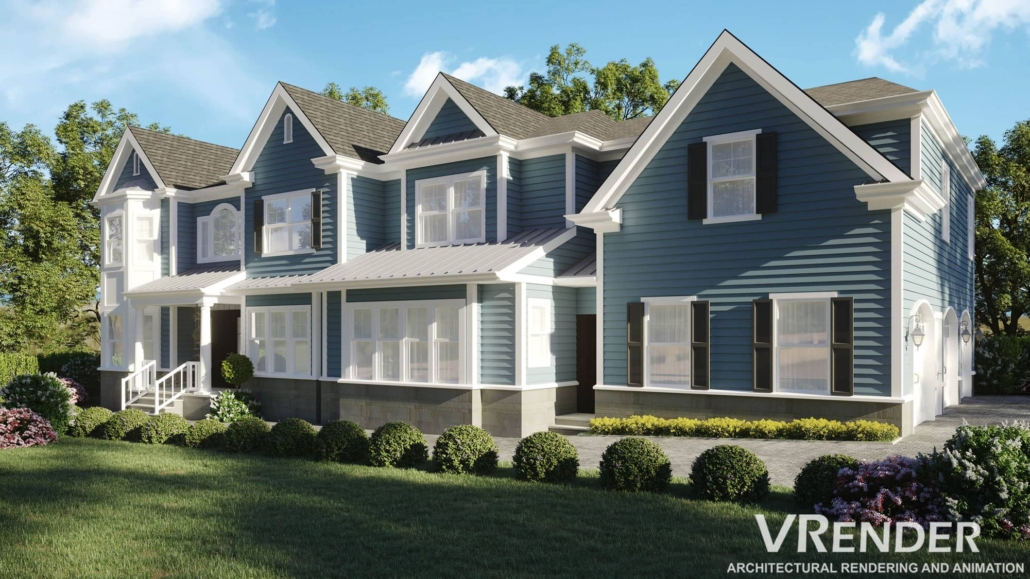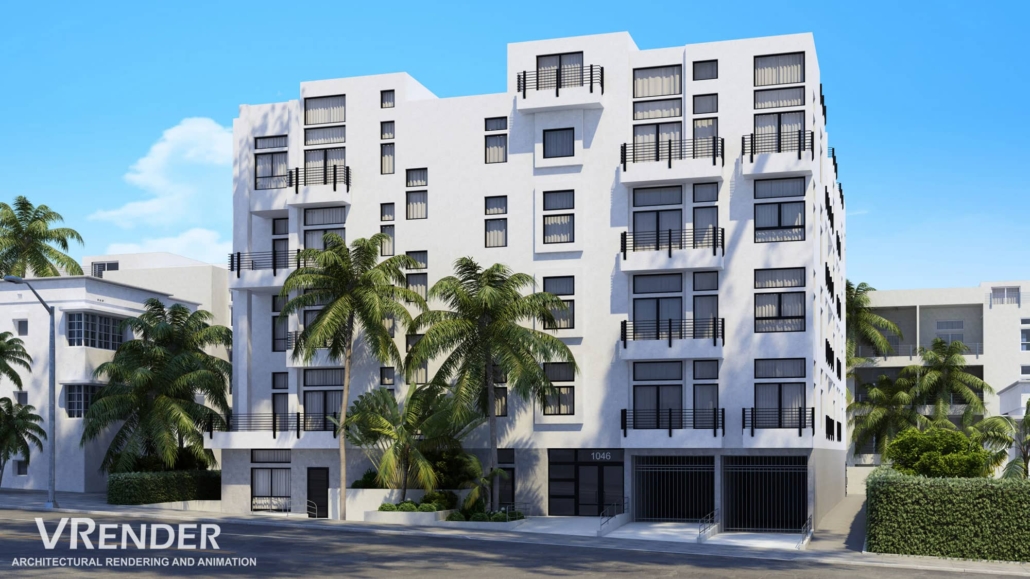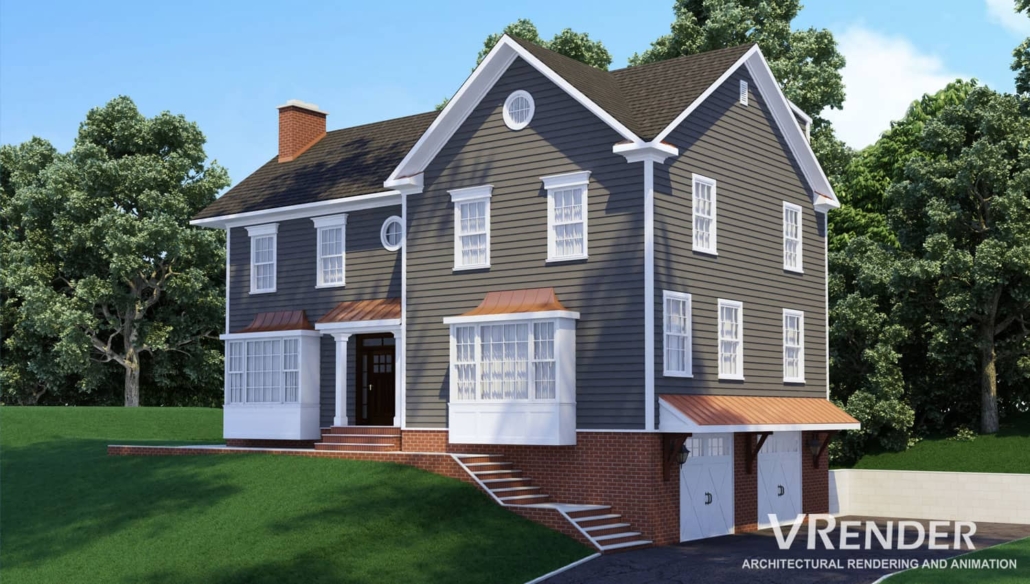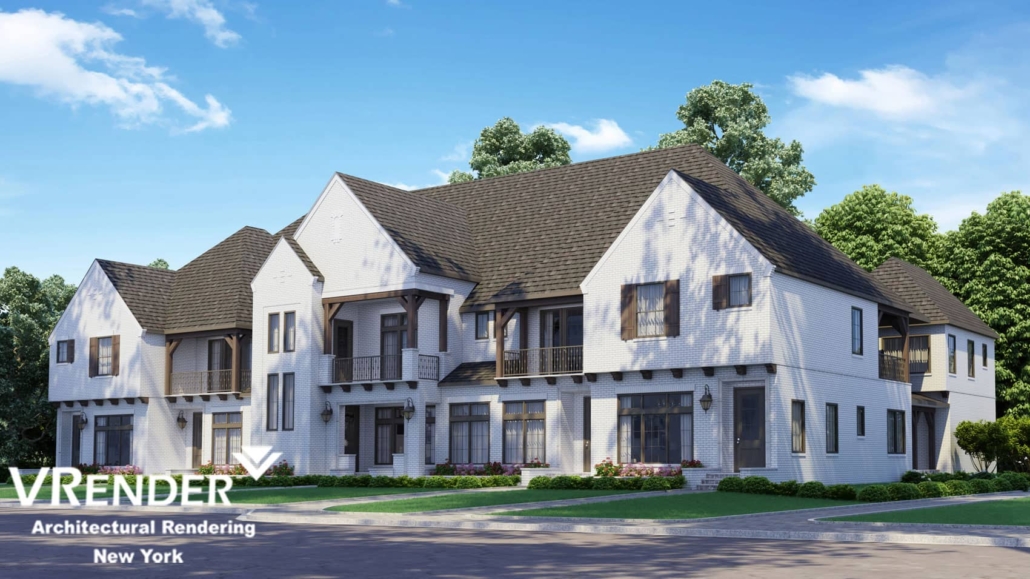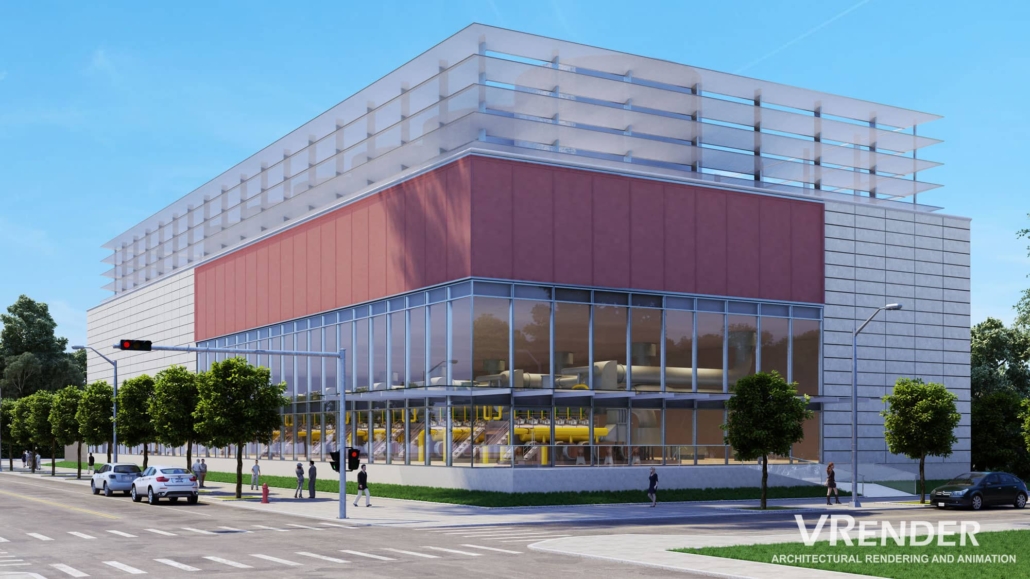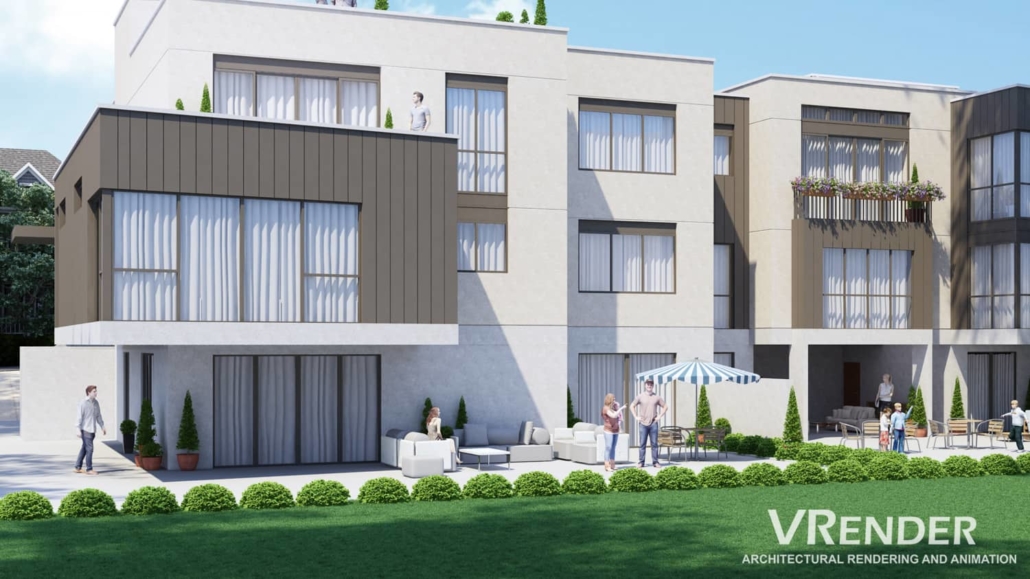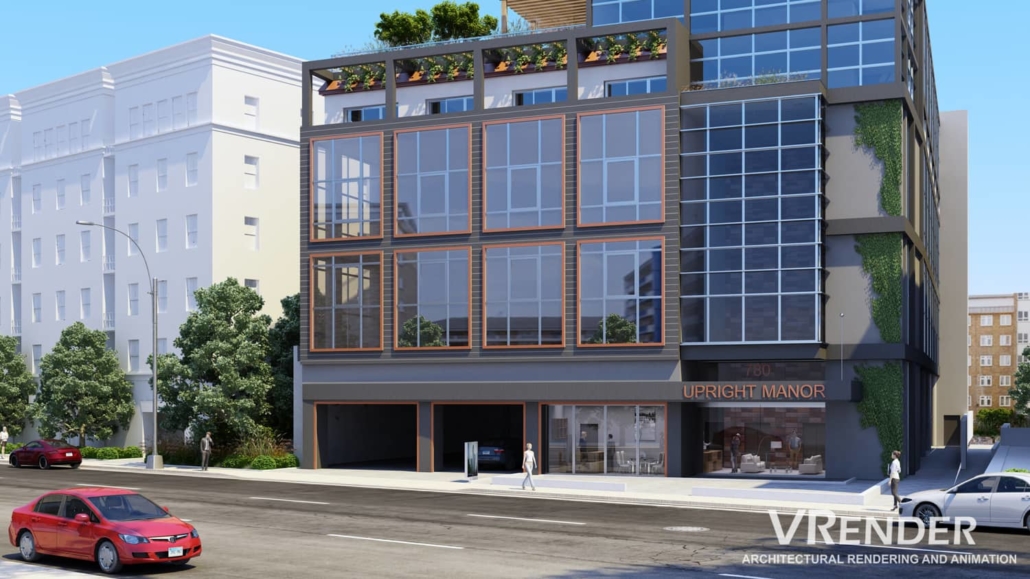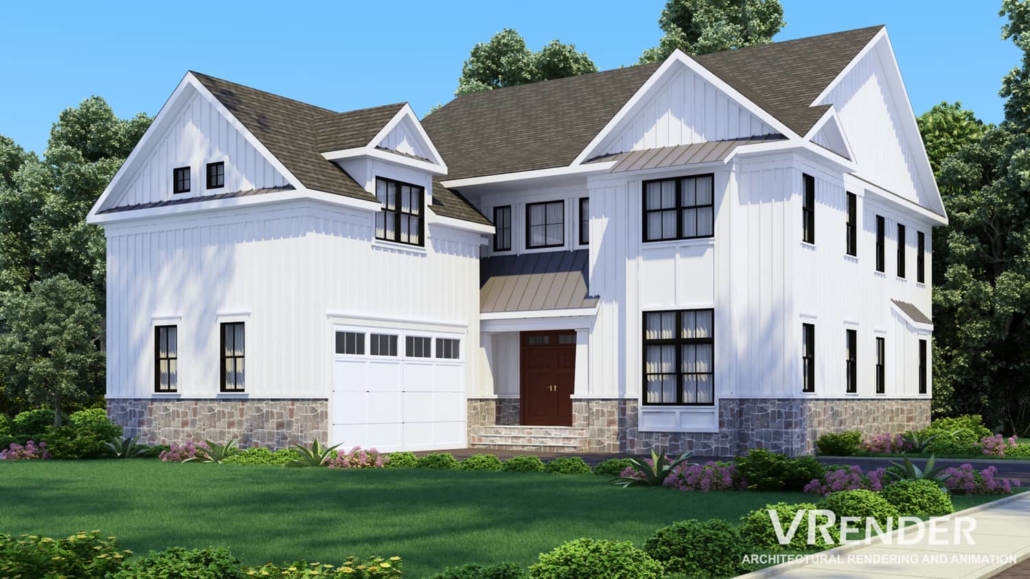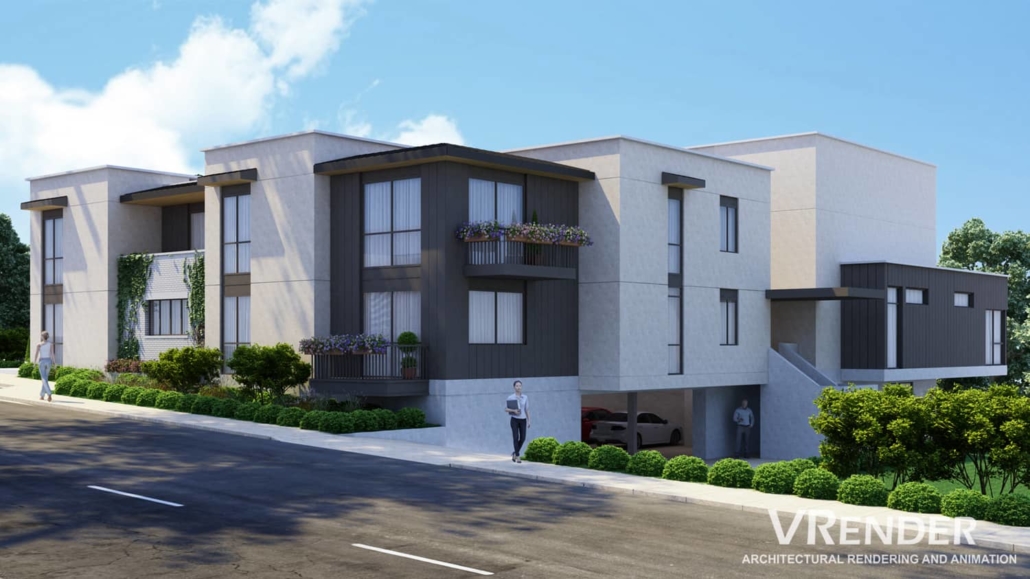Technology has advanced in recent years by enormous steps and has made strides to convert 2Dimensional drawings into realistic 3Dimensional representations. The term rendering is conversant among architects, engineers, designers, realtors, etc., whose aim is to visualize their creative process to be better appreciated, visually appealing, and easily understood.
This essay aims to demystify the creative process of 3D building rendering to assist architects and designers in preventing many of the frequent pitfalls associated with these new forms of design communication.
DEFINITION OF ARCHITECTURAL RENDERING
Architectural rendering is a process in which an architectural design is created in two and three dimensions. The objective is to depict a real-life experience of how an area or structure looks before it is developed.
THE DESIGN PROCESS
Everything starts with the design. Architects interact with clients and consultants to create a building design by working through the conceptual vision.
In many cases, 3D rendering is used early in the design process to make the greatest use of the feedback mechanism and move the design ahead quickly and precisely as feasible. In this sense, it is virtually impossible to carry it out in the “wrong” way. The design process should be developed in such a way that it works for your specific design team. The more data on the project you have, the more accurate your design will be.
At this point in the process, 3D rendering artists should be strictly controlled to generate a picture, an animation, or a digital VR experience that focuses on very specific parts of the design.
So the procedure continues till the desired design is attained. In most situations, design and rendering work continues until the building is finished and occupied. The process is critical because it determines the rigor and accuracy with which the initial concept will be carried out.
ARCHITECTURAL RENDERING ADVANTAGES
Architecture is a discipline where great precision is important. Architects need all the tools they can find to guarantee the completed product is safe and satisfy all the demands of their customers. The greatest advantages of 3D external construction are:
1. Higher design accuracy – individuals can make mistakes in angles and dimensions, even with their years of expertise and their most exact calculations. 3D external representations enable architects to verify the structural integrity and correctness of their design parts.
2. Multi-angle views — Traditional 2D drawings limit the number of angles from which you may examine it, while 3D renderings are not so constrained. For the whole team to grasp the completed result more clearly, multi-views allow you to explain the design with much ease.
3. Minimize building expenses – Since you can immediately discover problems with the building design with a 3D render, you will reduce your total building expenditures. In addition, the building process may be shortened, and the cost can also be reduced.
4. Engaging advertising – architectural renderings are an attractive and appealing method to promote a new building or design. In addition, potential customers are more likely to respond to a complete 3D visualization than to a flat 2D design.
5. Easier Design Changes – Perhaps you determined that the building does not have enough windows or that the entrances are not in the best locations. An architectural rendering will allow all stakeholders to implement design modifications all along the building’s façade with ease.
ARCHITECTURAL RENDERING VARIANTS
- Aerial Rendering:
An aerial view creates a dynamic standpoint that provides a better knowledge of the terrain, the structures around alongside detailed views. - Interior Rendering:
This view is supported by details such as floors, furniture, and lighting. Interior renderings indicate the function of a space and how living or working in the space will be like. - Exterior Rendering:
Factors such as light, shadows, and reflection are requirements in the production of an exterior representation. It explains how a building is connected with the environment and its residents.
ELEMENTS OF GOOD ARCHITECTURAL RENDERING
- The Structure:
The structure is the final focal point of any architectural rendering and should be represented in as much detail as the design allows. - The lighting:
Lighting is arguably the essential building rendering component to get perfect, depending on the mood or environmental situations the rendering artist is attempting to express. Lighting can enhance or break a scene or experience, especially when striving for photorealism. This is one of the most questionable and prevalent rendering errors, and it may be especially noticeable when crammed into a VR project. - The Texture:
Towards the conclusion of the rendering process, the texture becomes considerably very essential. Although it may not seem important during the initial phase of rendering, architects and designers should have a concept of the materials and colors they will use from the start. This feature adds an extra touch of realism to the project. - Entourage:
The entourage of a rendering is the ambient materials and pictures that help reinforce the conceptual meaning of the design. The people, trees, cars, street lamps, and sky conditions that give the building its proper position in the world are all shown here.
CONCLUSION
Among the most popular applications of 3D rendering is to have architects, construction firms, and clients all on the same design page. The overall objective of every architectural design is to integrate flow with functionality, and being able to view both elements in 3D can assist since it gives you a better spatial concept.

